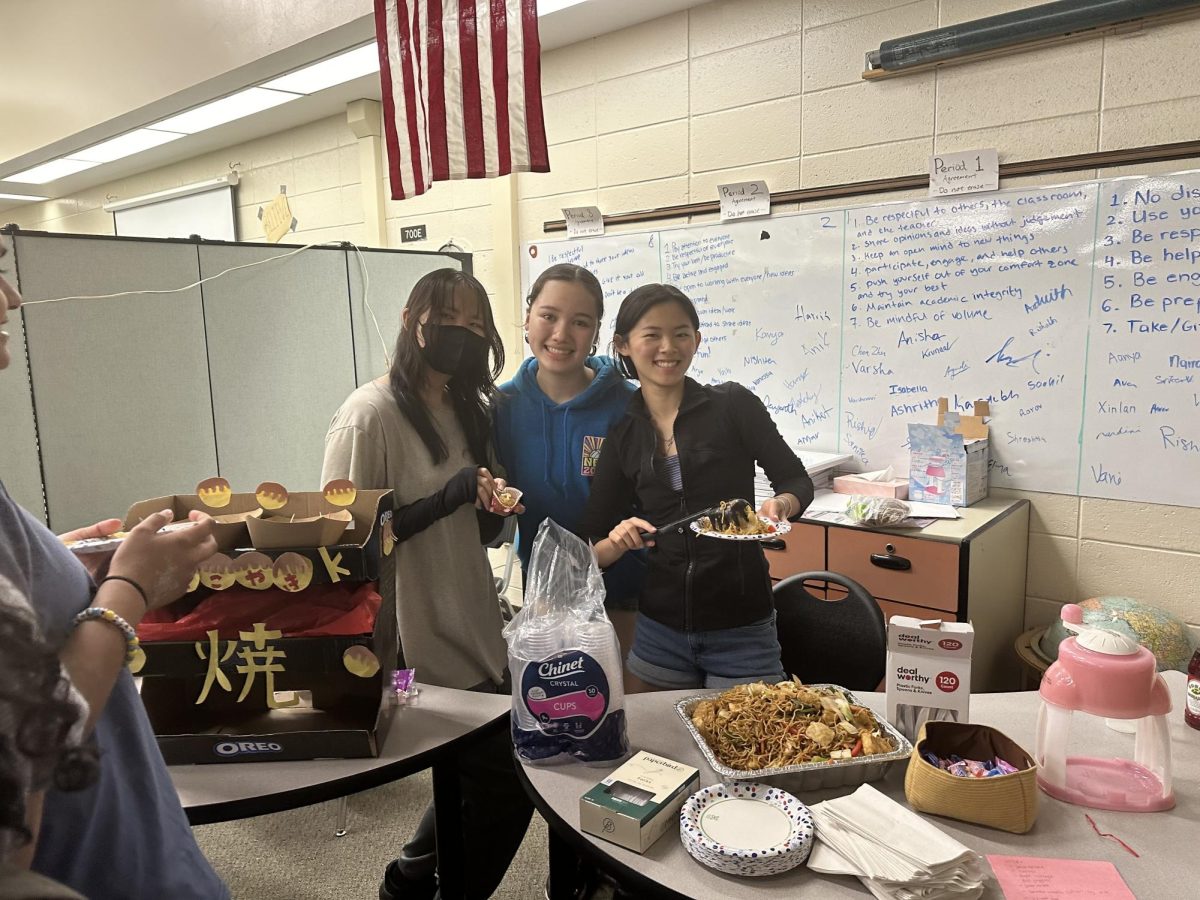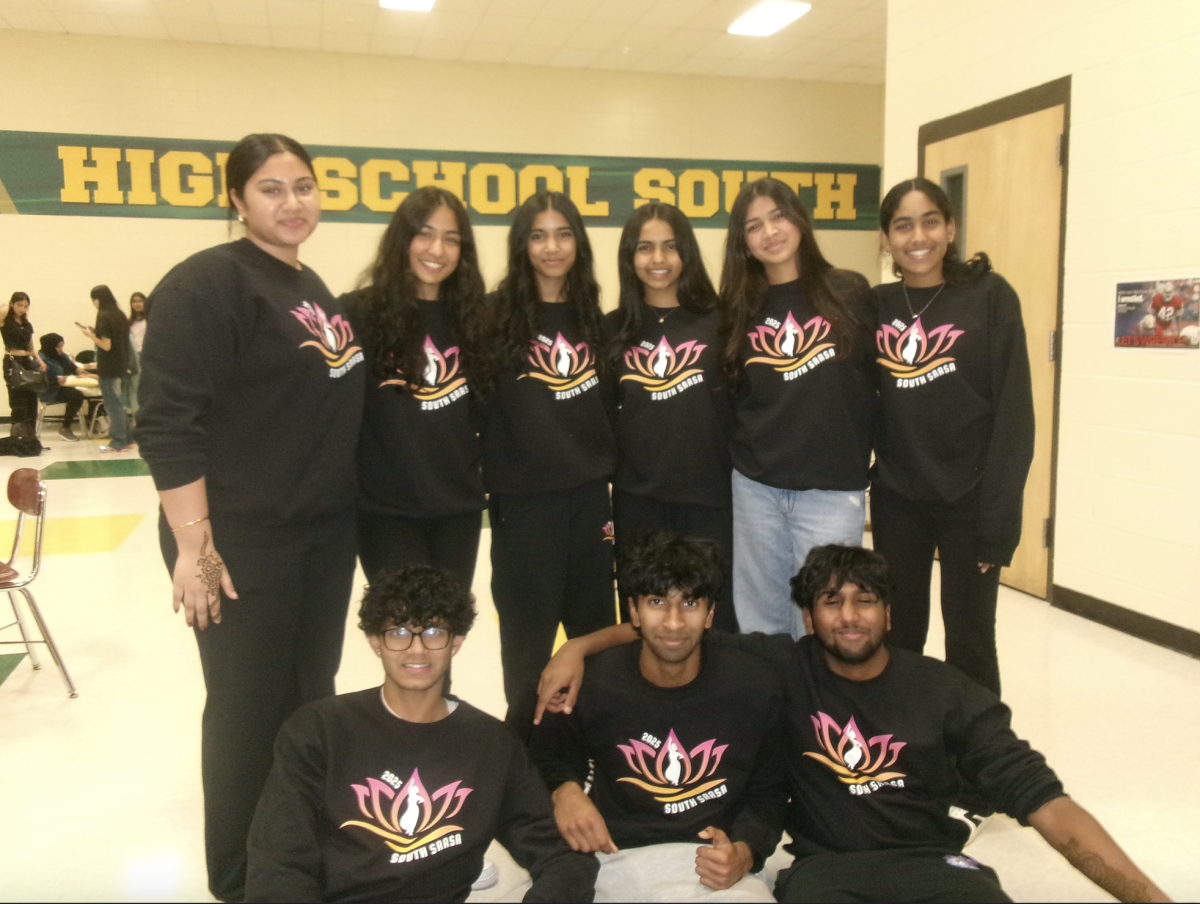Walking into 700F on June 5th, our eyes were captivated by the festive decorations: sparkling fairy lights, lines of streamers, and colorful paper chains. This was the cheerful sight of the Japanese Language and Culture Club’s (JLCC) second summer festival. Traditionally referred to as Natsumatsuri, JLCC added their own South spirit to this beautiful cultural tradition.
Natsumatsuri, which translates to “summer festival,” is celebrated between July and August, according to the website Tokyo Treat. Although there are many reasons the festival is celebrated, some of the most important ones derive from ancient Japanese rituals celebrating gods and praying for good agriculture.
An estimated 0.6% of students at South are of Japanese descent according to a Pirate’s Eye poll sent to students. This year’s lively festival was also celebrated enthusiastically by students of non-Japanese heritage.
Events manager Julia Diez (‘25) is not of Japanese descent, but believes in learning about other cultures through celebrations like Natsu matsuri.
“Although the festival is pretty foreign to where we are now and on the other side of the globe, it’s still important to learn about other places, cultures, especially when you have the opportunity to.”
The first celebration of this festival at South was last year when a now South alumni Jeffrey Yuan (‘24) started the Japanese Culture Club and suggested the idea of holding a Natsumatsuri.
Rina Okada (‘25), co-president of the club said, “We like to reference many activities you would typically see at a summer festival in Japan.”
Playing games was a large part of these activities. At South’s Natsumatsuri, participants could play four games to earn tickets.
Describing two of the games, co-president Erik Ji (‘26) said, “One of the games is ‘shateki.’ Typically, in an actual Natsumatsuri, you would be shooting a pelican or something. But obviously we can’t do that, so we used rubber bands instead. You shoot a rubber band and you try to hit a target.”
“Another one was ‘senbonbiki,’ in which there are a lot of strings, so it translates to a thousand strings. You have a thousand strings, and each one is associated with some sort of fortune, and you just pull one
and see if you get lucky.”
In addition to tickets, participants could earn rewards such as origami creations and anime photocards.
The third game at the event was a two player one named konpira fune fune. Diez describes it as a “game that Geisha play with cups to try to test their reflexes.” Participants played an adapted version of the game where instead of a cup, they passed a disc back and forth to see who could lift it first.
Yo-yo tsuri, or balloon fishing, was a popular game at Natsumatsuri. The main goal of the game is to steadily fish floating balloons in water using a rubber band and a paper-string hook. The biggest challenge of yo-yo tsuri was to make sure the paper-string hook did not break.
The tickets earned through these games could be turned in towards the end of the event to have a chance to win a raffle prize related to Japanese culture. These included anime character keychains, Japanese candy, and the grand prize–a blue Miffy plush.
In addition to fun games there were delicious foods. “We’re having takoyaki, which is octopus balls, and yakisoba, which is a kind of fried noodle. We’re also having shaved ice at the food stand because Rina brought her kakigori (shaved ice) machine,” said Diez.
Ji believes that this celebration is important to South because it showcases sides often overlooked about Japanese culture. “It’s important to help show other South students more in depth about Japanese cul-
ture. I think a lot of times because of what’s online, people think, ‘oh it’s just anime and Manga and stuff,’ which is part of it, but that’s definitely not the entire picture.”
Now, heading into their fourth year as a club, Diez hopes that it has a consequential future. “Eventually, I really hope future club members can put on something on the level of SAASA or China Night, because
I think it’s really nice that our school has these cultural celebrations. And I think we should have more of them.”
Okada has similar hopes for the club and its spirit. “I hope that this tradition of holding a summer festival will continue for many more years to come. As this club becomes bigger, I hope it doesn’t lose its original purpose of showcasing Japanese culture to a curious audience. I hope student interest is peaked through our club, and this is done through passion and a desire to learn.”





